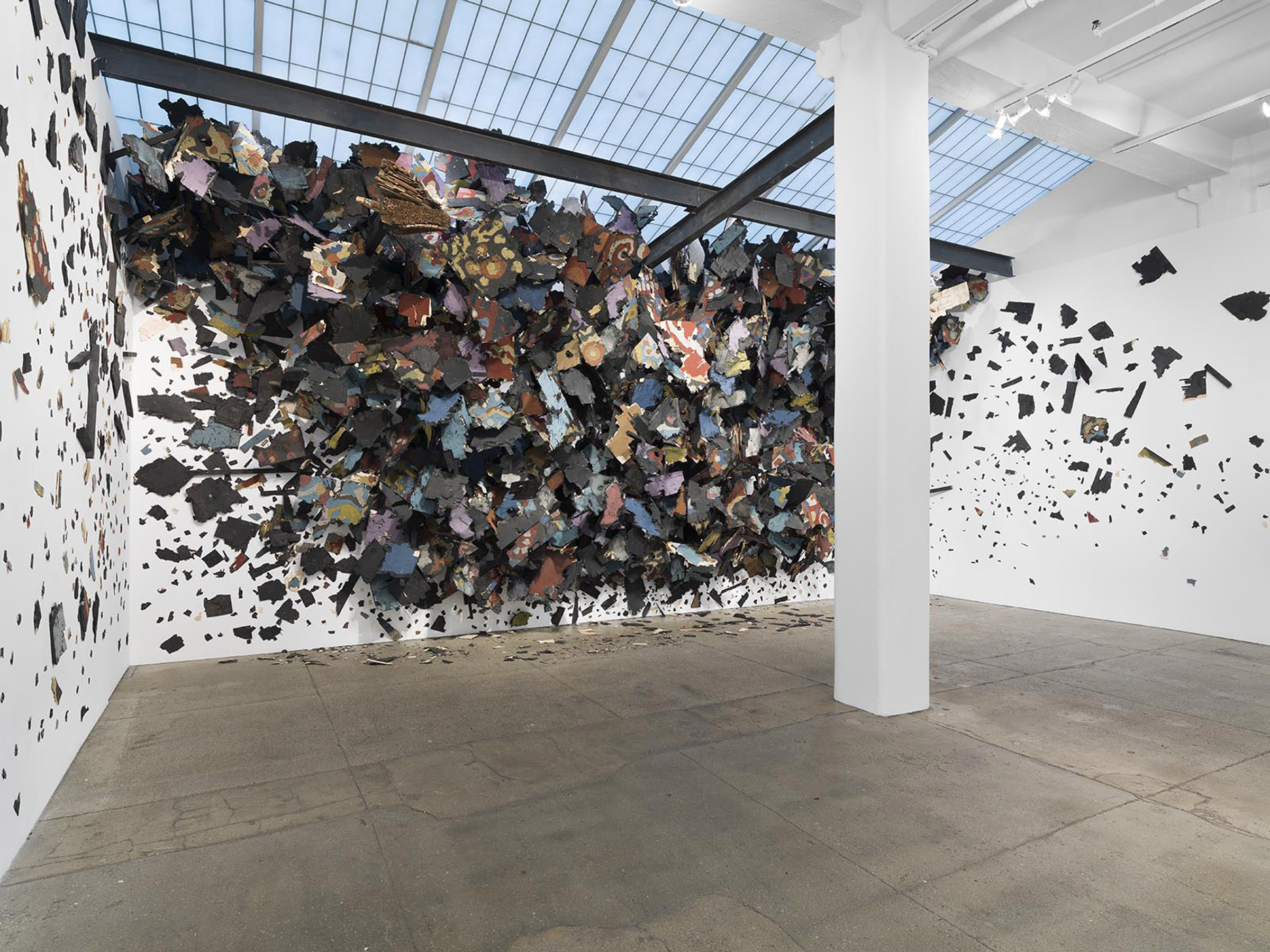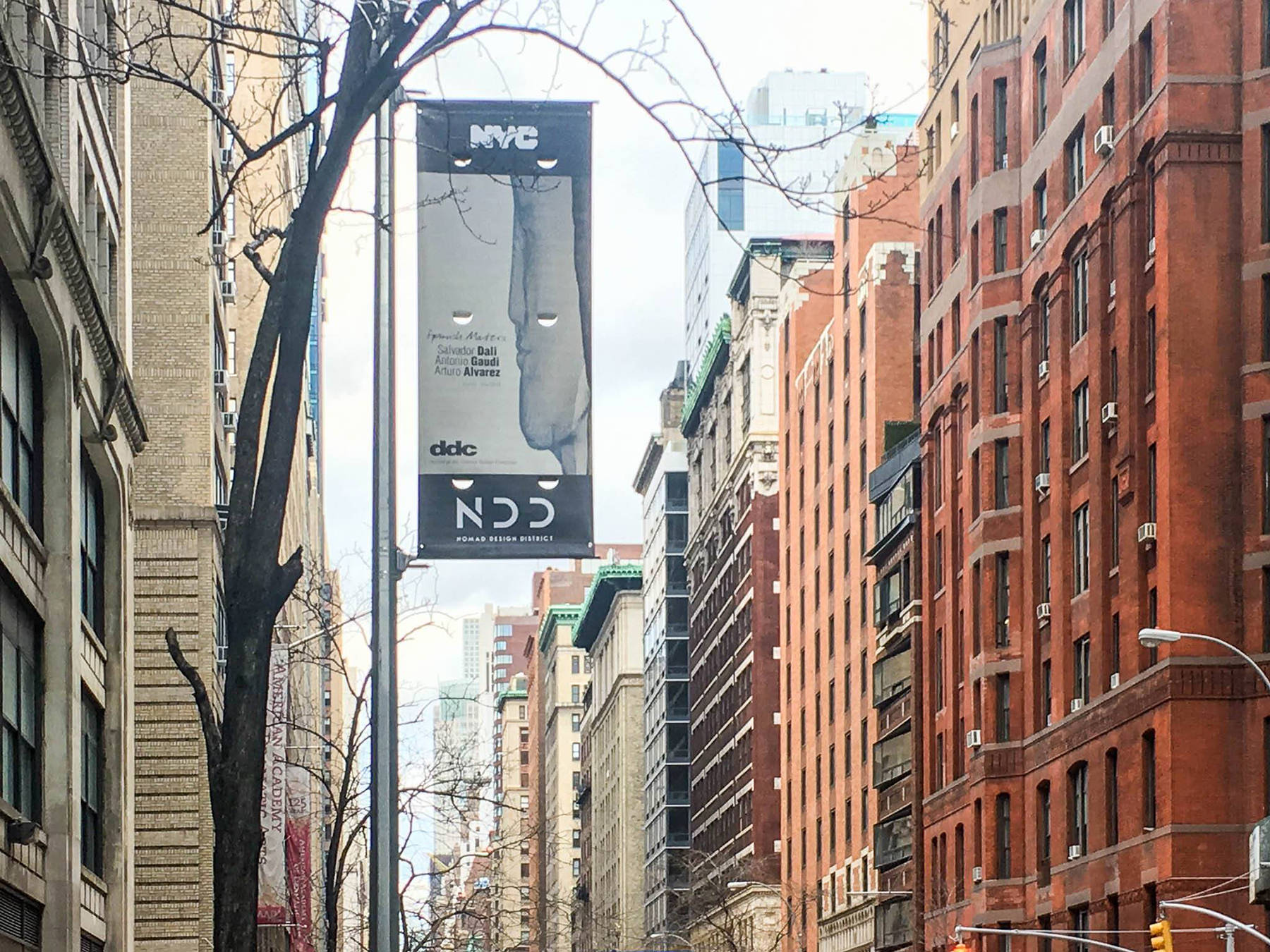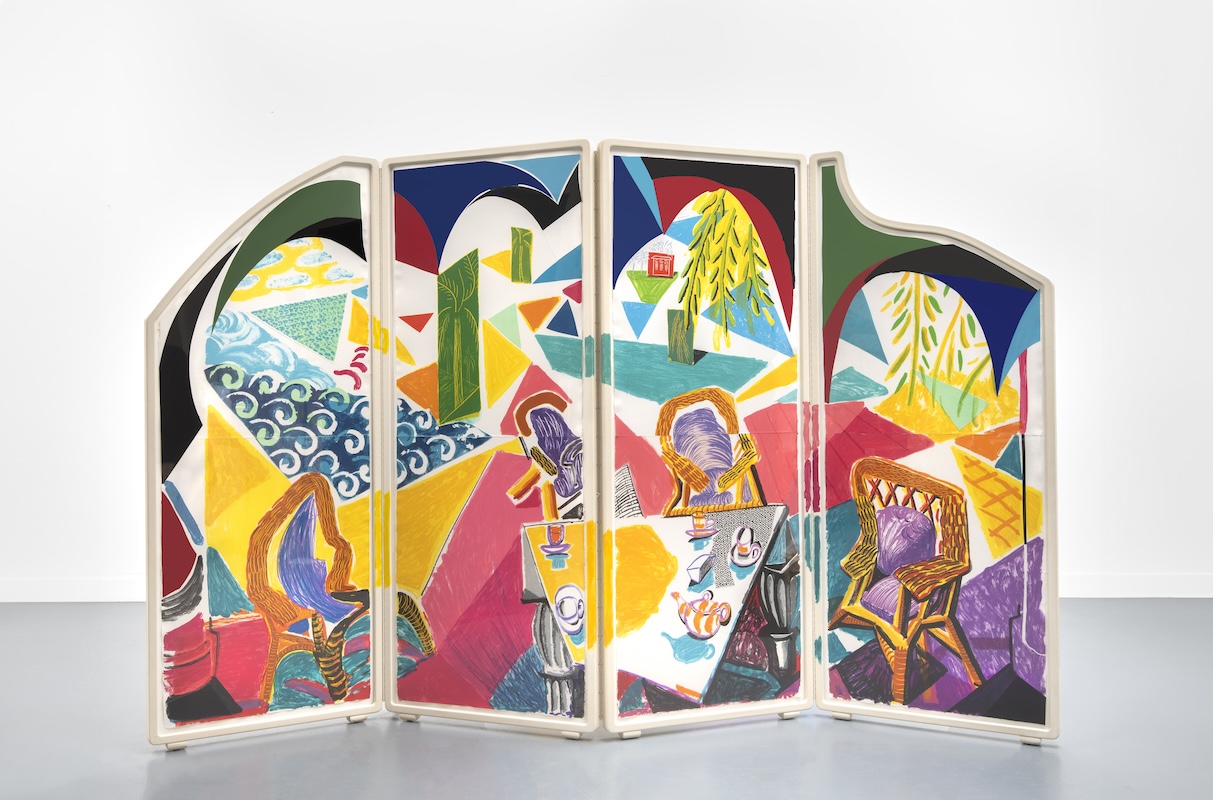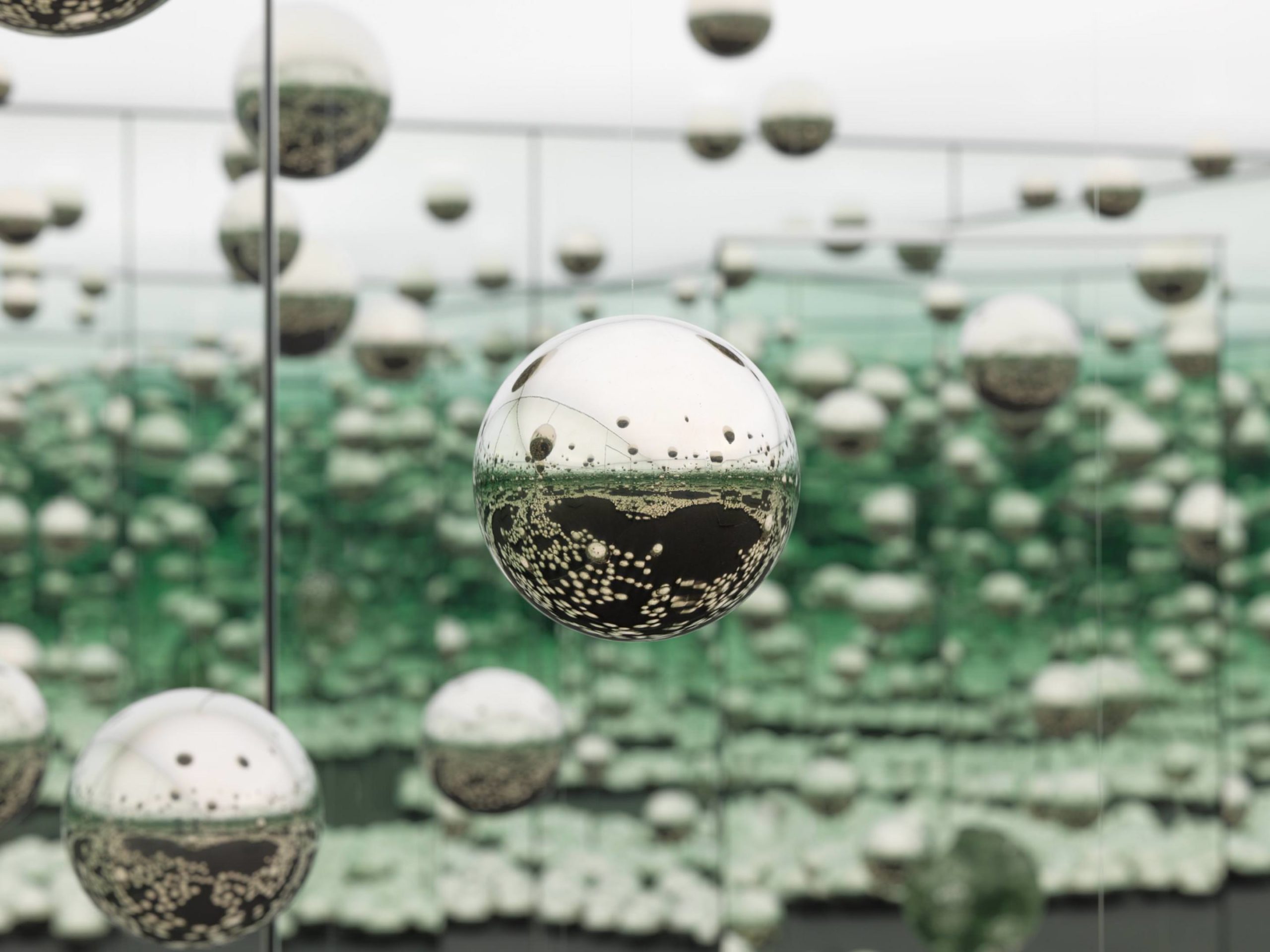When Leonardo Drew takes on a challenge, he goes in head first, not feet first. His most recent pursuit is a public work currently on view at Madison Square Park, City in the Grass. That interactive sculpture—which can be touched, walked on, and sat upon—marks the Brooklyn-based artists first use of color.
City in the Grass was also the jumping off point for his solo show at Galerie Lelong & Co., up through August 2. Whitewall caught up with the artist to learn more about the new direction in his practice and his long held belief that the viewer plays a major role in the realization of his work.
WHITEWALL: Was there a starting point for this exhibition?
LEONARDO DREW: Yes, actually I would say that my exhibition at Galerie Lelong & Co. intercepted City in the Grass, the public installation at Madison Square Park. Strategically it just made sense to do an exhibition running alongside the park installation. It put me through a whole other level of physical rigor in order to realize it. But really the piece that actually came first was the installation in the park, as the first introduction of color in my work, and the gallery installation intercepted that.
WW: You’ve said that the work will lead you, it says “follow me.” Given that, how do you begin?
LD: Well it’s like I’m working with seven crying babies, I’m usually rotating seven works simultaneously. And they’re speaking to one another, so there’s never really a moment when I’m not absolutely focused on the process of creating. One work can actually assist the other in existing.
WW: And you’ve said that you get out of the way and let the work happen. How then do you know when it’s done?
LD: Honestly, the work is really never finished. If it leaves the studio, it is out of my hands, and that means it’s done. If I were to get the work back, I’m back on it again. So there’s never really a moment when I’m not actually addressing the concerns and the next iteration of any of my works.
WW: You number your works, rather than give them titles, and have expressed that you don’t want viewers to be bogged down in your experience of the work, but to have their own. Why is that important to you? Have you always felt that way?
LD: The works are numbered in effect because it allow the viewers to realize themselves in the work and not have to work off of me. And that’s important. I have absolutely always felt this way. The mother piece of all of my works is Number 8. Number 8 is the piece that introduces that very philosophy because before Number 8, there was 1-7, and Number 8 is the surviving element and next iteration of 1 through 7.
WW: Number 215 is an explosive piece—how did you want it to exist within the gallery space?
LD: Number 215 is actually a work that will take on any space. It can be morphed, realized, shrunken, and expanded into any space. This is how the work realizes space. So, in its next iteration, it will inevitably take the shape of its surroundings.
WW: The installation incorporates sand, as does your public work City in the Grass. How did you start working with sand, a relatively new material for your practice?
LD: The very idea of working with color was introduced when I was in China, where I was working with porcelain and with glazing. So four years of that, is what pushed color into my vocabulary. As I am moving forward and the language is expanding with the use of sand, dirt and realizing how this can be pushed forward into the next phase, which is color, so colored sand and colored dirt just seemed like the next step. From my perspective, it seemed almost academic. As I am working color into my work, having it have a body was important, and sand and dirt actually allows the work to have that kind of energy and muscle. The tactility of the surface is also a big part of my interest in working with sand.
WW: For the other sculptural reliefs in the show, did you explore any new materials or colors?
LD: Yes, well the colored dirt was the very first and actually came before the sand. But there were difficulties working with wet dirt, because when you’re working with it, dirt actually becomes mud when you wet it. So if you want to color it, then you now have to deal with that mud. So I just had to be careful. But with sand, it was a different story. Sand does not become mud, it becomes something else, very similar to dirt but it doesn’t give you the difficulties of the material.
Number 217 is work in the exhibition that was made using colored dirt. There are two of these in existence today, this one and the other work that is included in my installation for the San Francisco Airport (SFO).
WW: City in the Grass is your first major outdoor public work. What attracted you to make a public piece?
LD: Well I like to take on challenges, and I don’t go in feet first, I go in headfirst. So if you give me a challenge or a brick wall, then I’m going to find a way to knock that down and attack the situation. The very idea of a challenge for me is spiritually uplifting. It’s an opportunity to sort of expand the language of the work. As I move forward, I’m always chasing new ideas. If I’m in China or Peru, you name it, wherever I am, I am taking on and digesting new possibilities.
WW: Why did you want it to be something visitors could touch, walk, or sit on?
LD: Because is tested my philosophy. My philosophy has always been that the viewer should be complicit in realizing and finishing the work. The next phase of this is the idea that as people are walking on these things, touching them, climbing on them, really living on them, they’re adding their own stamp to the work. For me this is a really important level or next step in the literal or physical manifestation of my philosophy.
WW: What has it been like seeing the public interact with your work?
LD: That’s interesting, because spiritually and otherwise the very idea that you actually create something in the studio, and then from there, there are people now literally on top of your work, and they’re sitting on it, reading books and relaxing and chilling on it and climbing on it. I make this thing in the studio, which is a very personal and intimate space, but now it’s actually public domain. And that’s the very beauty of it. If you allow yourself to spiritually let go, then you can gain from that, and it’s an uplift.
WW: Is there something you’ve taken from this project you’ll bring into the next or back to the studio?
LD: I think that if I were to do another public installation, I would probably carry this very same philosophy into that. I think it’s one that is actually not egocentric. It absolutely allows for you to truly take a step back and allow others to become part of the creative process.










